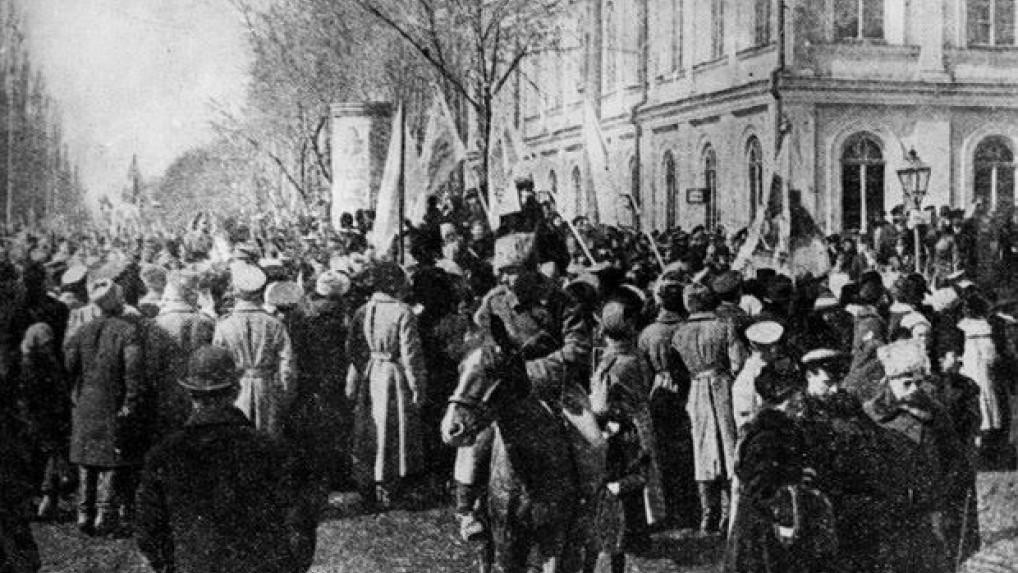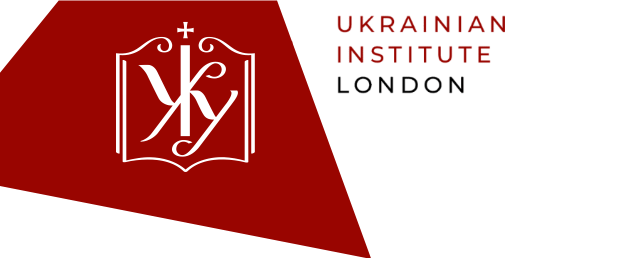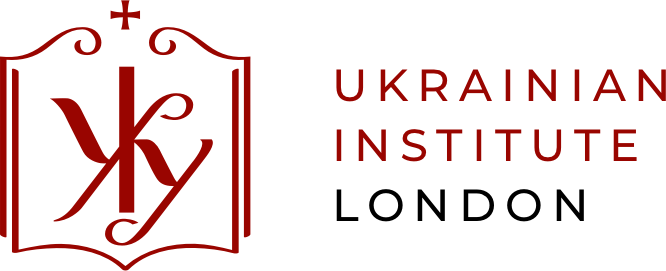How the prevalent narrative of the 1917 Russian Revolution overlooks Ukraine and other non-Russian provinces of the Russian Empire.

AUTHOR
Marina Pesenti, Director, Ukrainian Institute London.
Images of the 1917 Russian Revolution have become a defining feature of London’s visual landscape of 2017. Marching Bolsheviks and Red Army soldiers pointed at me from Tube stops and buses, bringing with them a strange feeling of returning to the Soviet Ukraine of my childhood.
Key cultural institutions in the British capital ran blockbuster exhibitions throughout 2017, detailing the complexity of those events through archival documents (British Library) and dazzling the spectator with the avant-garde art of the period (Royal Academy of Art). One more major show, of Soviet documentary photography, is opening in Tate Modern in November. Myriad smaller events were held alongside these major displays: discussions on Lenin, the legacy of the British Left, early Soviet cinema, even a re-enactment of the Moscow communal kitchen.
There is a gaping hole in this grandiose narrative, however: a complete ignorance of the developments unfolding in non-Russian provinces of the Russian Empire.
There is a gaping hole in this grandiose narrative, however: a complete ignorance of the developments unfolding in non-Russian provinces of the Russian Empire, reincarnated as the Soviet Union in 1922. Nationalist movements swept across its Baltic provinces, Ukraine and the Caucasus.
In June 1917, six months before the Bolshevik uprising in Petrograd, Ukraine People’s Republic (known as UNR – Ukrainska Narodna Respublika) was formed as Ukraine’s socialists with a nationalist agenda came to power. Jubilant crowds filled the streets of Kyiv, the former empire’s third-largest city.
The first freely-held elections to Ukraine’s Constituent Assembly showed an overwhelming 70% support for political parties advocating greater autonomy for Ukraine.
The first freely-held elections to Ukraine’s Constituent Assembly showed an overwhelming 70% support for political parties advocating greater autonomy for Ukraine. Only 10% of Ukraine’s voters at that moment supported the Russia-based Bolshevik party.
Within a few months, the UNR had laid the foundations of key state institutions of a new Ukraine: it formed the government, the army and the diplomatic corps, achieved diplomatic recognition, introduced its currency and promoted Ukrainian press and school education.
Two months after the seizure of power in Petrograd, the Russian Empire’s then capital, Lenin ordered the first Soviet assault on Ukraine. “Let us start with an inconvenient fact that already in December 1917, the first Russian Socialist republic attacked the first Ukrainian Socialist republic,” says US Professor Mark von Hagen. Two more Red Army offensives followed, in 1919 and 1920, finishing off Ukraine’s drive for independence.
In effect, these were wars of the imperial centre with its colonies.
As the Red Army starved, the future of Bolshevik power depended on food supplies, and most of them were to be seized from the fertile Ukraine. “For God’s sake, use all the energy and all revolutionary measures to send grain, grain and more grain!!!”, begged Vladimir Lenin in a telegram to his party comrades in Ukraine.
Thousands of small-scale peasant uprisings against the Bolsheviks and their requisitioning policies swept Ukraine. This early conflict between the Bolsheviks and the Ukrainian peasantry was a prelude to Ukraine’s man-made Great Famine of 1932-33, when 4 million Ukrainians were starved to death as a result of Soviet collectivisation policies.
In effect, these were wars of the imperial centre with its colonies. In order to see it that way, Professor von Hagen calls for “an internal de-colonisation” in the thinking of Western scholars of Russian and Soviet history.
Only a token attempt at this was made in 2017, as the British Library rolled out its “Russian Revolution: Hope, Tragedy, Myths” exhibition. A striking animated map showed a “victorious march of the Bolsheviks” across the swathes of the former empire throughout 1917-1921. The Ukraine part of it demonstrated that it indeed was a battlefield among several competing forces: the Reds, the Whites, the Western Allies and the home-grown anarchists. What the map ignores altogether is the UNR’s army, in control of large chunks of Ukraine’s territory, fighting for an independent state of their own.
“Disdain for the very idea of a Ukrainian state had been an integral part of Bolshevik thinking even before the revolution,” says Anne Applebaum.
“By the end of 1917, all the military powers of the region, including the brand-new Red Army, the White armies of the old regime, and troops from Austria and Germany, were making plans to occupy Ukraine. To different degrees, each of them would attack Ukrainian nationalists, Ukrainian nationalism and the Ukrainian language along with Ukrainian land,” says Anne Applebaum in her recently published “Red Famine: Stalin’s War on Ukraine.”
“Disdain for the very idea of a Ukrainian state had been an integral part of Bolshevik thinking even before the revolution,” says Anne Applebaum in her book. This chauvinism extended beyond the Bolsheviks to all political parties, centrists and Russian liberals included, and obscured their thinking about a possible political deal with the Ukrainian nationalists against the Bolsheviks, resulting in tragedy for both.
One of the key lessons that the centenary of the Russian Revolution ought to teach us is that the short-lived independence of Ukraine and other Russian-controlled provinces resonated in 1991, as the Soviet Union crumbled and the newly-formed states referred to their early 20th century experiences of building a modern and democratic state as a point of departure. That experience has now entered the mainstream of Ukraine’s historic narrative of today, as parallels between the Bolshevik onslaught on Ukraine and the current Russian aggression are being drawn.


